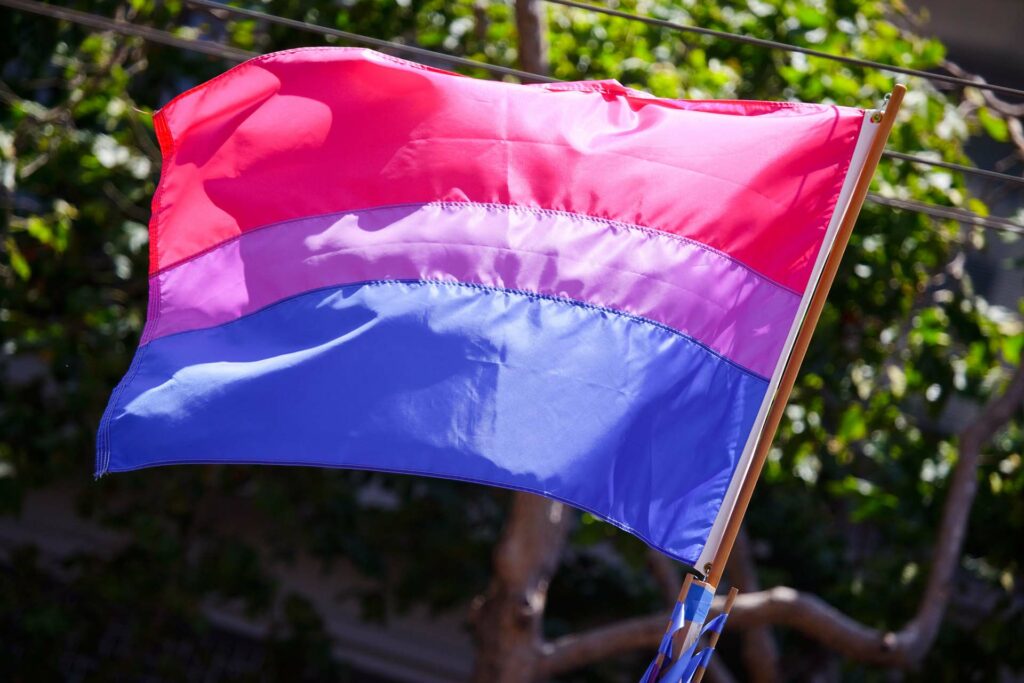Imagining Bisexual Futures
Research about bisexuals predominantly investigates our negative experiences. It is important to show the positive side, too. By Renate Baumgartner

Featuring the article: Rebecca L. Jones (2011). Imagining Bisexual Futures: Positive, Non-Normative Later Life, Journal of Bisexuality, 11:2-3, 245-270.
Writing a research column about positive visions of bisexuals turned out to be quite a challenge.
Research about bisexuals predominantly investigates our negative experiences, like discrimination and marginalization. It is important to point out these specific challenges, to underline the importance and urgency for change and support; however, I also think it is important to show the positive side: what makes a “bisexual life” fun and exciting, or which resources we have.
The study I’ve chosen to present did not have a specifically positive focus at its beginning. However, the results it reports are affirmative and the method used could be an inspiration for activist workshops or creative alone time. The author of the study, Rebecca Jones, is conducting research at UK-based The Open University, which has a track record of inspiring research about bisexuality. Some may know that the UK has a lively bisexual community which meets yearly for an event called BiCon (coming from bisexual convention/conference). The gathering aims to provide a space to discuss topics around bisexualities. Jones hosted a workshop at BiCon that aimed to make participants think about their future. The workshop was titled, “‘When I get older’: Imagining your bisexual future,” and was developed for BiCon 2010. This one-hour program was attended by 33 people of different genders who largely identified as bisexual. Its goal was to find out how “non-heterosexual adults imagine their future life courses.” Jones provided different methods to explore the topic. She started with a discussion on “when I fear growing older, I imagine,” then gave some positive visions on old age, which included reading from the book Growing Old Disgracefully (The Hen Co-op, 1993). Afterwards, participants were given materials to draw a picture of their imagined later life. Attendees were also asked to provide a description of the pictures and Jones discussed the pictures with the participants while they were drawing.
Apart from being interested in how bisexuals imagine older age, Jones also wondered if there would be any quasi-normative visions for later life. Previous studies by other researchers had shown that many people, heterosexual or homosexual, imagine futures that follow conventional heterosexual scripts, e.g., “marrying one life partner, having children and grandchildren.” The interesting outcome of this particular study is that the participants’ imaginations did not reproduce these assumptions. Many of the participants imagined a future without children. Also, pictures and descriptions of polyamorous relationships or having an active sex life at old age prevailed. Only 30% of the participants did not mention bisexuality or polyamory within this exercise and only one female participant imagined a negative future life. Thus, Jones summarizes: “Participants predominantly imagined positive later lives with highly non-normative life course features.” One similarity with other studies was that many participants imagined fulfilling sexual/romantic relationships and enjoying life in relative withdrawal from the world.
The main contribution of this study is not just that it is the first of its kind reporting how bisexual people imagine their later lives. It is also exciting in that it differs from previous studies in the non-normative and positive way the participants imagine their lives. Participants of other studies predominantly imagined (hetero)normative life courses. Jones thinks that has to do with participants being mostly younger and heterosexual, with questions posed in a more normative surrounding (universities). Another study conducted with non-heterosexual participants (mostly lesbian or gay) showed that the ability to imagine positive life courses was connected to the degree the participants imagined scripts similar to conventional heterosexual ones. Putting her research in relation to these findings, Jones is wondering what made her participants imagine non-normative and still positive futures – a question she cannot solve in the discussion of her findings. However, she points out that the workshop and study took place at a community event with its own “local normativities,” like being polyamorous and sex-positive. Also, most of the participants were childless at the time they attended the workshop. Thus, Jones concludes: “It seems likely that the strong local normativities of BiCon, which are spelled out to all participants in the Handbook and elsewhere, played a major role in enabling the creation of positive non-normative futures.”
In my opinion this is a good example of how community not only shapes the ways we see ourselves in the present but also influences the ways we can imagine our future. I think the opening statement of the reviewed article can also be seen as inspiration to explore this topic for ourselves: “All of us have to learn how to invent our lives, make them up, imagine them [. . .] If we don’t, our lives get made up for us by other people.” (Le Guin, 2004, p. 208).
References:
The Hen Co-op. (1993). Growing old disgracefully: New ideas for getting the most out of life. London, UK: Piatkus.
Le Guin, U. (2004). The wave in the mind: Talks and Essays on the Writer, the Reader, and the Imagination.
Dieser Text erschien zuerst in Bi Women Quarterly, Vol. 36 No. 1, Winter 2018.